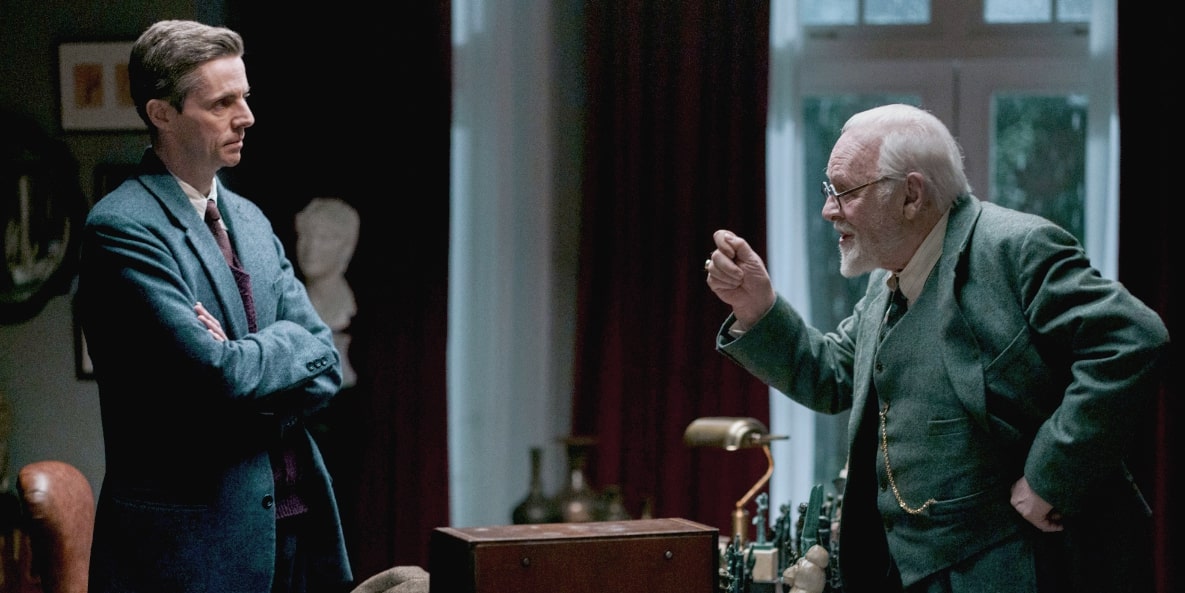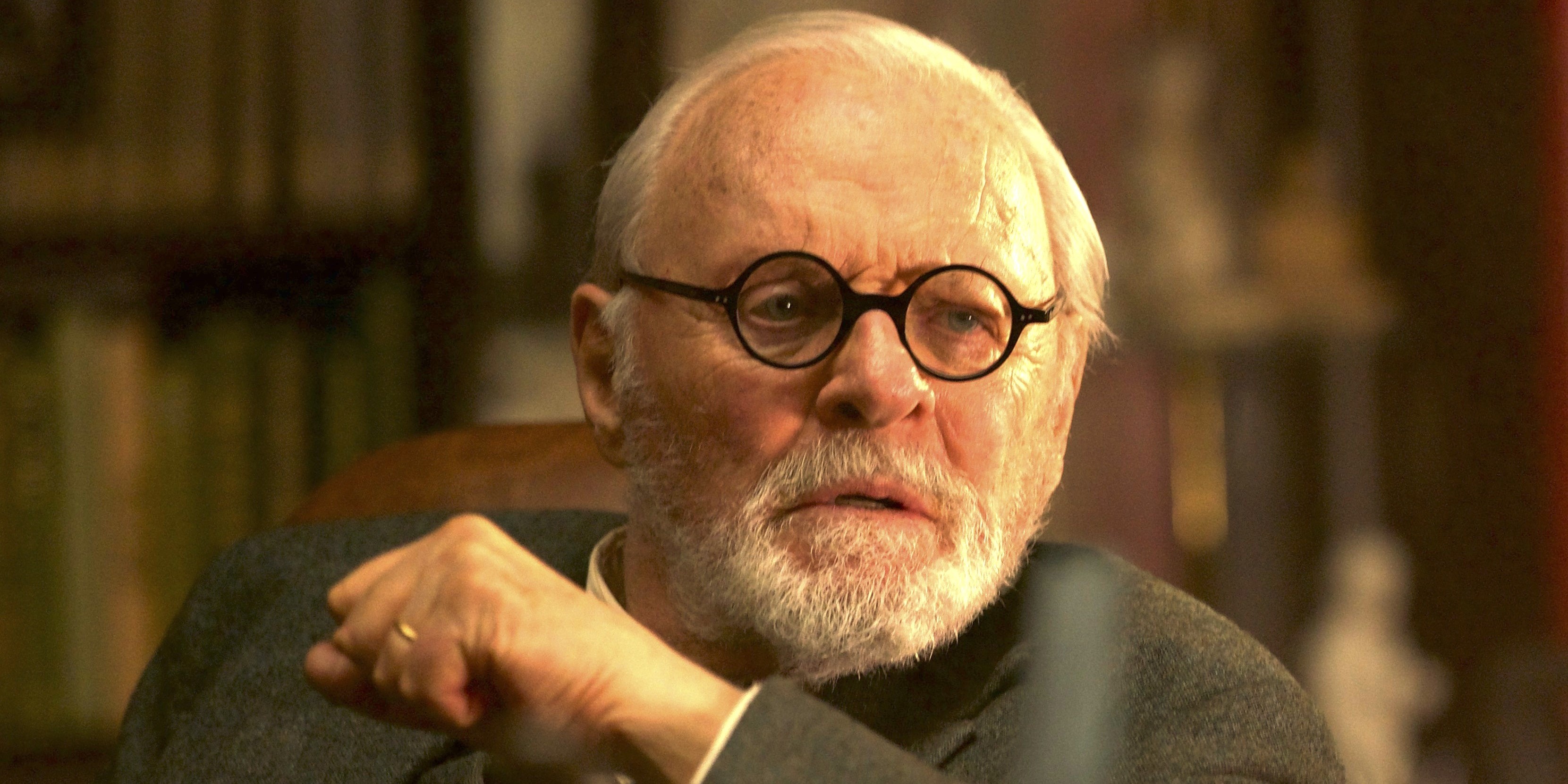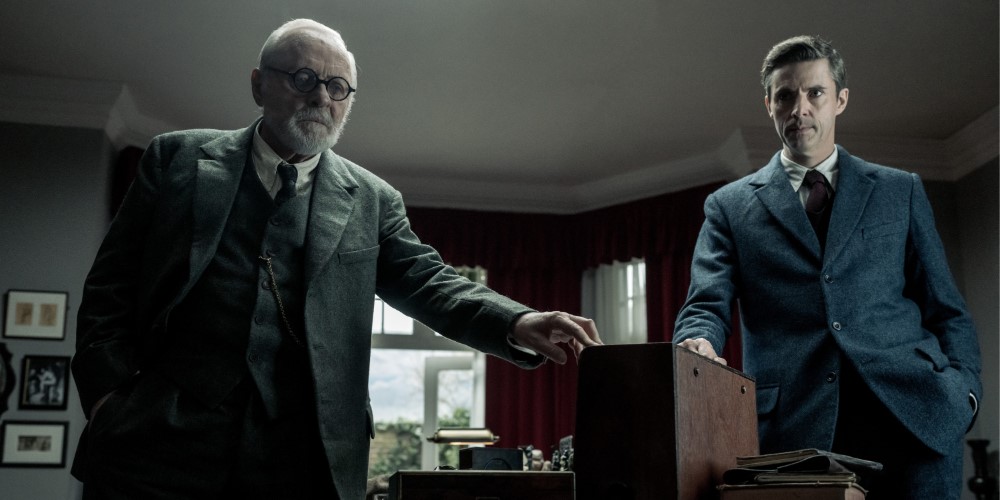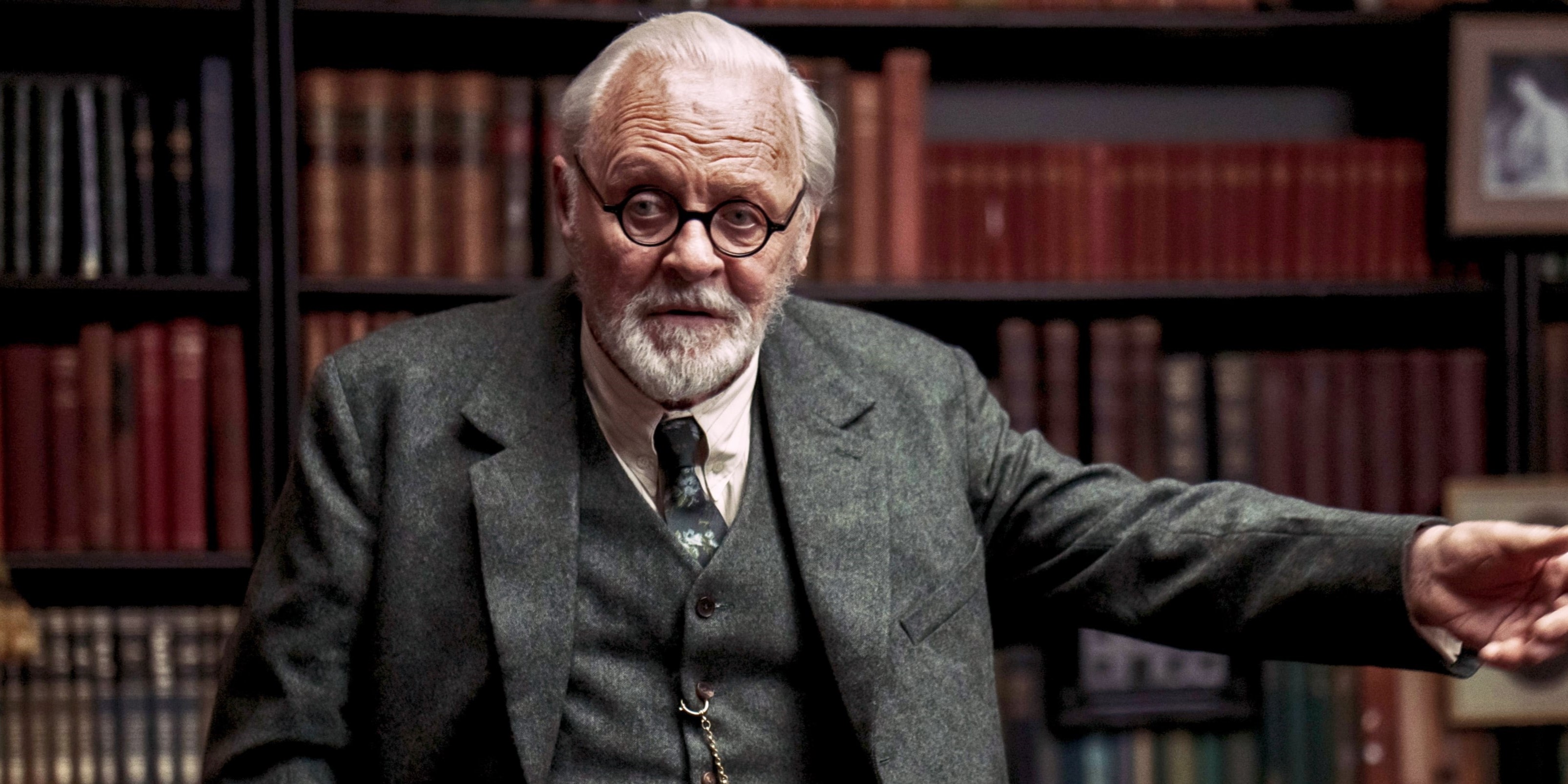Under the direction of Matt Brown, ‘Freud’s Last Session’ chronicles the discourse between two diametrically opposed literary titans in their respective fields, psychologist Sigmund Freud and author C.S. Lewis. The story is set on the eve of World War II, towards the end of Freud’s life. As the scholars meet in discussion over ideas of God, the narrative also delves into their personal lives, exploring vulnerabilities and past trauma. With the 2023 drama film featuring prominent historical figures and a contentious discourse, questions may arise regarding the authenticity of its story.
Freud’s Last Session is Based on a Fictional Play
Sigmund Freud and C.S. Lewis never met in real life. ‘Freud’s Last Session’ is a work of fiction that derives from the stage play of the same name by Mark St. Germain. In turn, the play is inspired by Armand Nicholi’s book, ‘The Question Of God: C.S. Lewis and Sigmund Freud Debate God, Love, Sex, and the Meaning of Life.’ The book presents the real arguments of both thinkers on each of its titular topics side by side, something that St. Germain’s play turned into a face-to-face interaction with arguments of his own invention added in.

For the film’s screenplay, St. Germain worked alongside writer-director Matt Brown, restructuring the original work into more dynamic interactions with an exploration of their vulnerabilities. Flashbacks of war and trauma were added to create impactful sequences, and some characters were brought forward to contribute to the story. In the play, Anna Freud was not a major character, but she was added in the film as a pivotal part of Sigmund Freud’s days at the end of his life.
“It was actually the cover of the book that inspired me—the cover which had Freud and Lewis facing each other,” said Mark St. Germain in an interview, talking about his inspiration from Armand Nicholi‘s book. “What Dr. Nicholi did in his course at Harvard, he’d present Freud’s view on something and he’d counter it with Lewis’. And at the end of the book, he said that there was a young Oxford don who visited Freud shortly before his death, and I thought, wouldn’t it be incredible if it were Lewis?”
The father of psychoanalysis, Sigmund Freud, is an inescapable force in the study of psychology. Born into an Ashkenazi Jewish family in Austria, Freud spent most of his life in the country but was forced to flee to Britain in 1938 to avoid persecution at the hands of Nazi Germany. Suffering from cancer, he opted for euthanasia in 1939. The film and play are set two weeks before his death, when he is visited by the British author C.S. Lewis, who seeks to challenge his views on God.

C.S. Lewis was an iconic writer and theologian known for his fantasy book series, ‘The Chronicles of Narnia,’ and non-fiction Christian apologetics. Lewis was a close friend of J. R. R. Tolkien, both of whom had fought in the First World War. Although they didn’t have a conversation, Lewis did criticize Freud in his work. While ‘Freud’s Last Session’ invents its conversations based on the ideas and philosophies of both men, the information, life events, and ideas it presents about them are bona fide. Mark St. Germain read multiple biographies of both men as well as their letters to be comfortable in his ability to speak from their points of view.
“Some of what they had to say is well known; others were invented,” said Mark St. Germain in the aforementioned interview. “The structure of the play is invented, to make it more dramatic, I set it on the day that England entered World War II, and also two weeks before Freud committed suicide.” In the corresponding time period depicted in the film, C.S. Lewis was a young Oxford faculty member teaching English literature.
An atheist in his early twenties, Lewis was converted back to Christianity with the persuasions of his friend, J. R. R. Tolkien, and joined the Church of England in 1931. This transition, of an intellectual and literary scholar becoming an atheist and later converting to Christianity, adds further nuance to his efforts in countering Freud’s arguments on God.
The film added another layer of authenticity by recreating its setting, Sigmund Freud’s home in London, with help from the Freud Museum. The museum had numerous figures and sculptures that sat around Freud’s office. The film’s production designer, Luciana Arrighi, recreated the sculptures through 3D imaging, thus replicating the late psychologist’s characteristic office space.

Matt Brown had his own research material on Sigmund Freud at home, as his father is a psychiatrist who has studied Freud over the years. “He was telling me, the thing about Freud was just the intellectual curiosity,” said Matt Brown. “I think it’s seen in a way in that production design or in his own production design of his surroundings; you can see his curiosity at the world and humankind and behavior.”
‘Freud’s Last Session’ is an imaginative film based on Mark St. Germain’s play and adds more elements to it, creating an engaging narrative for a feature-length production. Despite its fictional nature, the movie holds up as a character study, creating an unbiased discourse between men with opposing viewpoints who had a surprising lot in common.
Read More: Best Philosophical Movies on Netflix


You must be logged in to post a comment.